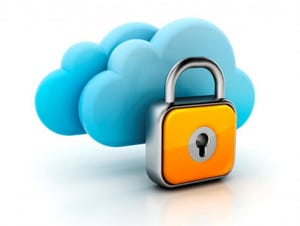The move to the cloud may not be as simple as it purports to be because the delivery of various cloud services relies on old and outdated technologies that were designed for use in an on-premise architecture. How can the MSP simplify and consolidate these services into an easy to deliver range of services?
May 21, 2013

By Celestix Guest Blog 2
 The cloud is increasingly being leveraged to deliver mission critical resources to employees and customers for businesses in all sectors. With the ability to drive down costs, simplify management and deliver excellent service, it is a logical consideration for the deployment of many applications.
The cloud is increasingly being leveraged to deliver mission critical resources to employees and customers for businesses in all sectors. With the ability to drive down costs, simplify management and deliver excellent service, it is a logical consideration for the deployment of many applications.
But the move to the cloud may not be as simple as it purports to be because the delivery of various cloud services relies on old and outdated technologies that were designed for use in an on-premise architecture. How can the MSP simplify and consolidate these services into an easy to deliver range of services? One major consideration here is the provision of security services such as two factor authentication.
So how has the move to cloud computing affected the two-factor authentication market and how can two-factor authentication be deployed in a cloud-centric architecture?
In a cloud based computing model the need to authenticate users is a necessity; or rather the risk of unauthorised access is heightened and therefore should be addressed. A two-factor authentication solution must be deployed somewhere but how and where?
The majority of two-factor authentication providers offer a traditional on-premise solution without multi-tenancy. These solutions can certainly be used in a cloud context but they will be required to run either on the customer site, resulting in cost and complexity for the cloud service provider, or in the MSP’s data center which can also result in cost issues because the solution will not be multi-tenanted.
Deploying a solution that is not multi-tenanted detracts from the benefits of cloud computing and may prevent the MSP from offering a standardized service for managed user authentication. So how can an MSP offer a two factor authentication solution that will not incur upfront costs and increased management overheads?
It is important to first discuss the need for authentication with the customer and ask if they have already invested in a two-factor authentication solution. If they have then it should be assessed for efficacy in a cloud computing environment. If the solution can be managed by the MSP at a fair cost then this may be an acceptable solution. However, replicating this model for multiple customers will result in complexity as they will most likely be using different technologies. This complexity will undoubtedly increase the cost of providing the service.
Rather than become involved in managing multiple authentication solutions, Celestix proposes the use of a standard multi-tenant authentication platform which has been designed to meet the needs of the MSP. Such solutions are still hard to find but the company provides its HOTPin solution to meet such a need.
The use of a multi-tenanted authentication server that provides an easy to use management and reporting interface and a flexible price model empowers the MSP to deliver on the core ethos of cloud computing by simplifying IT while driving down cost.
 Tim Ager is CEO at Celestix Networks, which develops multi-tenant two-factor authentication solutions for MSPs and their customers.
Tim Ager is CEO at Celestix Networks, which develops multi-tenant two-factor authentication solutions for MSPs and their customers.
You May Also Like
